Abstract [Resum] [Resumen]
The Library of Birmingham is a major new cultural development for the 21st century, involving radical architecture and a radical redesign of the architecture of libraries as public spaces. The role of the library as a social and experiential learning hub is explored together with its potential for creative, cultural, enterprise and knowledge development in the modern urban context. The library must move with the grain of the emerging knowledge ecology of the city, cultivating partnerships and testing to the limit the opportunity for co-production of services and content, marrying the physical and digital libraries seamlessly. The concept challenges the institutions of the city and individual citizens to engage with the library to colonise its physical spaces and in so doing redefine the traditional relationships between service provider and customers. Understanding the learning processes which convert information into knowledge is critical to the visualisation of new spaces.
1 Context
The Library of Birmingham (LoB) will be a major new cultural destination, rewriting the book for 21st century public libraries. A key cornerstone of Birmingham City Council's Big City Plan to regenerate the city centre, the £193m project will be a hub for the region and an engine for the knowledge and creative economies, linking the people of Birmingham to the world and bringing the world to Birmingham. The LoB opens in 2013.
Designed by international architects Mecanoo, the LoB will be located in the city's Centenary Square. The building will comprise a spacious entrance foyer with mezzanine, lower ground level with indoor terraces, four further public levels and two outdoor garden terraces, a 'golden box' of secure archive storage occupying two levels, provision for staff offices and plant to service the building on a further two levels, and at the very top of the building a rotunda feature housing the Shakespeare Memorial Room. The finished building will cover 31,000 square metres across ten levels, providing a striking architectural landmark that will transform not only the face of Centenary Square, but the city of Birmingham as a whole.
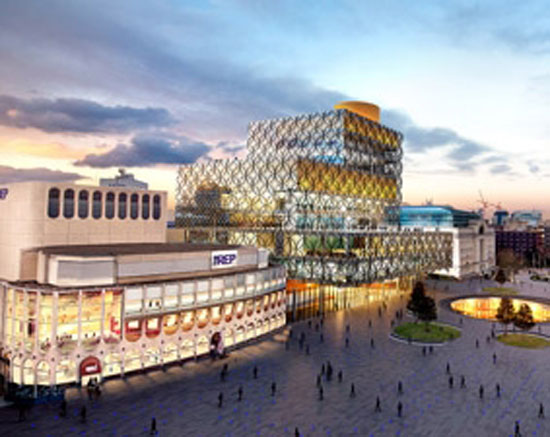
Image 1. The Library of Birmingham 2013
The new library will be physically connected to Birmingham Repertory Theatre (The REP) and the two organisations will work in partnership, bringing together the written and spoken word through drama, poetry and performance.
The LoB will provide a showcase for the city's internationally important collections of photography, archives and rare printed books. New facilities including state-of-the-art gallery space will open up public access to the collections for the first time. Other facilities will include a new 300 seat studio theatre, an outdoor amphitheatre and other informal performance spaces, a recording studio, and dedicated spaces for children and teenagers. More than three million visitors are expected each year, and millions more online.
2 New Spaces
The LoB will provide a new space for lifelong learning and knowledge growth, a physical and digital portal for Birmingham's citizens to the wider world. In co-operation with a range of private, public and third sector bodies as well as individual citizens, the library will articulate a continuing process of organic growth and emergence in the use of public space. Additionally, the LoB will offer physical space for creative, cultural, enterprise and knowledge development. The development of the concept for the LoB has prompted a radical rethinking of approaches to public space usage in the library context, which are nonetheless rooted in and build upon established practice in the sector.
Public Libraries have for many years functioned effectively as social spaces operating well beyond their traditional role as a repository of large collections of books and other materials. Individuals and groups use the library space to meet and so contribute to an area's civic and social capital, cohesion and trust -Oldenburg's "third Space" extending beyond home and office. Public libraries are essentially very open and accessible public spaces. The resulting public realm has an enormous impact on the quality of local social relations, of local civic democracy and a localised sense of social justice. The public's right to share and use space is a key contributory element in building social capital.
Social capital among urban library users has been shown to be higher than that of non users, with a strong correlation between frequent library use and take up of community services. The local public library is a place where local community organisations meet and through these meetings social trust and a "collective efficacy" can develop. The library, therefore, has the potential to be a major 'civic integrator'. But too often such meetings are exclusive rather than inclusive in nature, and whilst supporting local organisations do not necessarily build greater dialogue between different communities of interest.
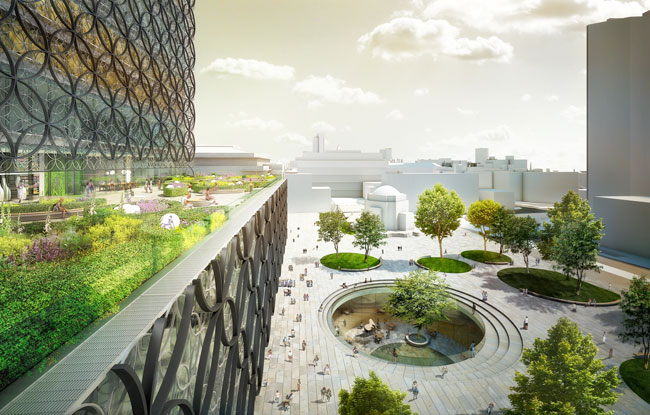
Image 2. Better dynamic between library and public realm builds social capital
Birmingham City Council sees the public library service in general and the new LoB in particular as a means of building inter communal trust, civic engagement, community development and lifelong learning understood in the broadest sense as encompassing the acquisition and refinement of skills and non vocational adult and family learning. The City's response to the UK Government consultation on the future of public libraries, Empower, Inform, Enrich (2009) identified their role as:
- unlocking the door to literacy and creative reading experiences
- supporting all kinds of learning, both formal and informal for people of all ages
- minimising digital exclusion through free Internet access and helping people learn digital skills
- supporting the information needs for the knowledge economy
- being a socially inclusive place for all
- being locally based and responsive to the needs and priorities of the local authority
- being a place to share, create, discover, visit, make connections, exchange ideas, find surprises and inspiration, communicate, interact, teach, and learn.
Much of the LoB's interior space will be flexible with areas dedicated to the arts, culture, performance, reading groups, business support and development, family learning, and local heritage. More flexible design will enable the library to become a meeting place where informal knowledge exchange and informal social learning takes place. Occasionally sections of the Library will be temporarily repurposed for events, talks, health fairs and exhibitions. This will hopefully bring people into close contact with the resources and not segregate them in separate meeting rooms. In this way, it is hoped the LoB will act as catalyst for community cohesion and informal learning which is directly in tune with the UK government's approach to lifelong learning as outlined in the policy white paper The Learning Revolution (2009) which endorses the social value of "open space" as means of empowering groups and individuals. Future performances within the new library space in Birmingham will need to be more than simply a spectacle and didactic reading and learning will need to be fully engaging and mutually self-enhancing.
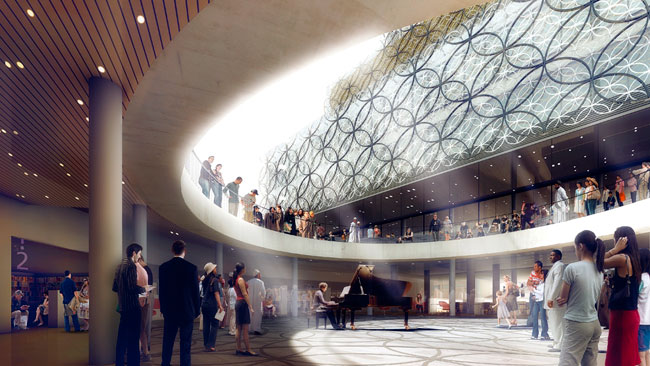
Image 3. Performance spaces
Self-organised learning is an important part of the mix. Many people are already doing this. We want to empower more people to organise themselves to learn, with opportunities designed by communities for communities.
The LoB intends to offer a vast array of learning opportunities and cultural attractions catering for those who will enter the library for a specific purpose and for others entering out of curiosity and interest but with no specific goal in mind. The theory of free choice learning and the notion of the library as a "third place" inform the ideas shaping the LoB's model of service provision and architectural design. Hence the key messages to the Design Team, spearheaded by innovative Dutch practice Mecanoo International, included an emphasis on the dynamic between the exterior public realm and the interior of the library, creating a seamless open space, and on the quality of the circulation and the opportunity for surprising experiences in the library, laying stress on the learning and discovery inherent in the journey rather than solely on the destination or objective of the journey. Sometimes it can be better to travel than to arrive.
Key themes of the new dynamic for social and experiential learning spaces —the library— are those of partnership and co-production. In this reconstructed model, the responsibility for and ownership of the quality and range of services, or rather experiences, passes in large measure from the institution of the public library to its various communities of use and interest. This implies a revision of the unwritten social contract between provider and recipient of services, breaking down barriers and engaging communities —in the broadest sense— as a deliverer or provider of service and content.
A series of knowledge or topic hubs will facilitate free choice and directed learning. They are to be distributed physically and virtually throughout the new library. One such hub will be aimed at supporting enterprise and innovation extending the principles of the free 'Commercial Library' service initiated in Birmingham over 100 years ago. Thus the LoB will have an enhanced role in delivering active support for learners in the acquisition of skills necessary for economic success by providing a forum that brings together research, new knowledge and new practices. To effect this, a number of strategic and community partnerships will be developed to utilise the wide range of human and material resources in the city partly realising the Cabinet Office's recent thinking on co-production in the public services that sees partnerships as a way to "empower citizens to contribute their own resources (time, will power, expertise and effort) and give them greater control over public resources to achieve outcomes". Partnerships do extend users' choice and access although their realisation will necessitate an increase in such participation skills as being able to recognise opportunities to participate; knowledge of how to use different institutions; and, aptitude and skills in acquiring and making sense of information that emanate from diverse contexts. Navigating the provision within different types of institutions will require many different skills and effective partnership activity must aim to help people move effectively from one kind of real or digital resource or institution to another. This library-information-user literacy will enable individuals to follow one or more paths of learning or cultural engagement and may encompass family, social, community, educational, business and professional relationships.
The second dimension is that of service delivery based upon genuine community engagement. This approach essentially shares the opportunity to conceive, design and deliver services from the library, currently 95 % of which originate from the Library itself, to a much wider community of interest connected by a concern to promote dialogue, learning, and a greater understanding of key issues in society, the economy and the wider world. This service delivery may have commercial aspects, for example in the demonstration of new products, or it may be ideas-led, or motivated by a desire to promote and build social capital. It may take many forms: performance, demonstration, exhibition, event, workshop, seminar, lecture, discussion, and debate. It may last an hour, or a month. It will need moderation. It will need leaders and exemplars. It carries the potential to enhance understanding, to connect the elite of the city, whether social, economic or academic, with the wider public of all backgrounds and ages. Community coaching, problem solving and creative thinking could all form part of the broader offer of the LoB.
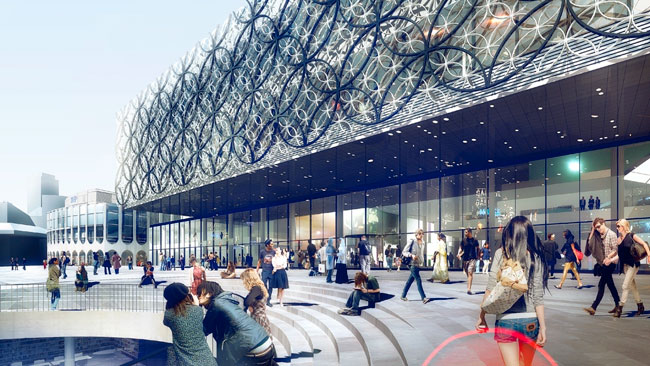
Image 4. Accessible to all
We envision a relationship which enables the cutting edge of university research to exploit the advantages of the LoB to reach the widest possible community audience, using a range of communications methods. Some of these methodologies will need to be developed as part of the relationship and may form part of the ICT-driven remodeling of the library. In essence, the LoB becomes the conduit for more effective communication between the academic sector and the wider community, and for knowledge transfer on a broad scale. This innovative model would appear to have the potential to provide a 'blueprint' for other academic institutions and public library services nationally and internationally who wish to enhance their community reach.
The resources and spaces of the LoB would be made available to universities, businesses, cultural agencies, schools, voluntary organisations and so on to conduct this dialogue and animate the spaces in as many creative ways as possible, at all times of day and night, limited only by our combined imaginations. It is probable that the value of this partnership could be further increased by effective engagement with a range of Small and Medium Enterprise companies based in the city and region, in particular those working in digital media, who can supply alternative approaches to innovation and a capacity to bring new products to market quickly. The obvious parallel is with social networking on the Internet, where such as Facebook, Bebo, or Myspace have in effect created a social learning space and legitimised user colonisation for purposes extending well beyond the original concept. The energy and dynamism then derives from genuine user-driven ownership of the space, with the technical owner intervening only to stimulate new ideas, enable new connections, and to moderate and quality assure the nature of the social intercourse. In the public library context, it is the last aspect which tends to generate much energy, though all too frequently this takes the form of greater heat and less illumination.
As a physical space for learning and civic engagement with the widest possible spread of communities and individuals, the public library has no equal, a strength which to this day remains under-recognised and under-exploited.
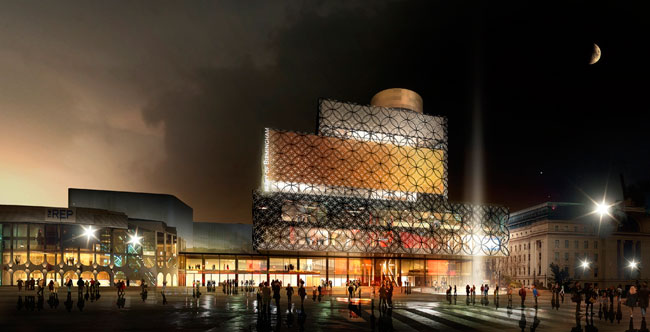
Image 5. The Library at night
Bibliografía
For more information about the Library of Birmingham visit: <http://www.birmingham.gov.uk/lob>.
Even the recent bibliography of libraries as social learning spaces is extensive; this list is only a small selection of many sources which have been invaluable to the development of our thinking:
Ashcroft, L. (2008). "Partnerships between public libraries and other agencies in England for provision of adult learning". World Library and Information Congress: 74th IFLA General Conference and Council, 10-14 August 2008, Québec, Canada. <http://archive.ifla.org/IV/ifla74/papers/122-Ashcroft-en.pdf>. [Consulted: 02/12/2010].
Bikerts, S. (2010). "Reading in a digital age". The American scholar (primavera).
Black, A.; Crann, M. (2002). "In the public eye: a mass observation of the public library". Journal of librarianship and information science, vol. 34 (3), p. 145–157.
Boyle, D.; Slay, J.; Stephens, L. (2010). Public services inside out: putting co-production into practice. London: New Economics Foundation.
Davis, C. (2008). "Librarianship in the 21st century: crisis or transformation?". Public library quarterly, vol. 27 (1), p. 57–82.
Dempsey, L. (2009). "Always on: libraries in a world of permanent connectivity". First Monday, vol. 14 (1).
Department of Culture Media and Sport (2009). Empower, inform, enrich. London: TSO.
Department of Culture Media and Sport (2010). The modernisation review of public libraries: a policy statement. London: TSO.
DIUS (2009). The learning revolution. London: TSO.
Franck, K. A.; Stevens, Q. (eds.) (2007). Loose space: possibility and diversity in urban life. London: Routledge.
Gorman, M. (2000). Our enduring values: librarianship in the 21st Century. Chicago: American Library Association.
Harris, K. (2003). "Your third place or mine? Public libraries and local communities". Public library journal, vol. 18 (2), p. 26–29.
Horne, M.; Shirley, T. (2009). Co-production in public services: a new partnership with citizens. London: Cabinet Office.
Johnson, C. A. (2010). "Do public libraries contribute to social capital? A preliminary investigation into the relationship". Library & information science research, vol. 32 (2), p. 147–155.
Manguel, A. (1996). A History of reading. London: HarperCollins.
Muddiman, D.; Durrani, S.; Dutch, M. et al. (2001). "Open to all? The public library and social exclusion: executive summary". New library world, vol. 102 (1163/1164), p. 154–157.
Oldenburg, R. (1989). The great good place: cafes, coffee shops, community centers, beauty parlors, general stores, bars, hangouts and how they get you through the day. New York: Paragon House.
Soja, E. W. (1996). Thirdspace. Oxford: Blackwell.
Worpole, K. (2004). 21st Century Libraries: changing forms, changing futures. London: CABE/RIBA.
Received: 11/10/2010. Accepted: 26/10/2010.